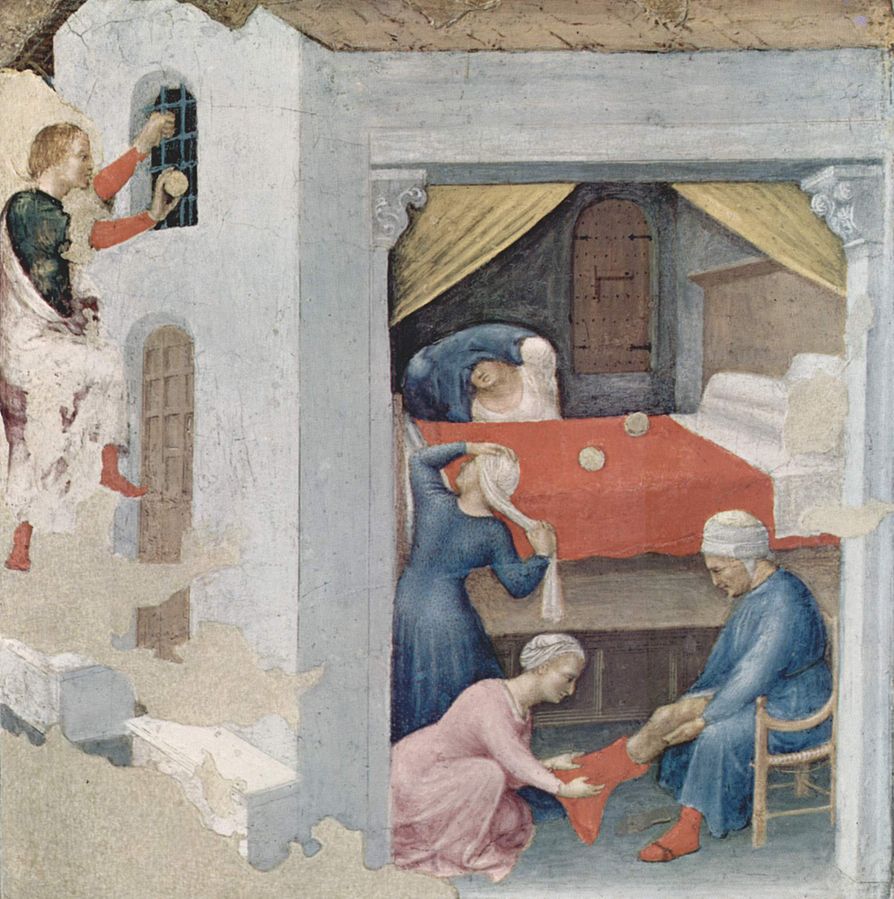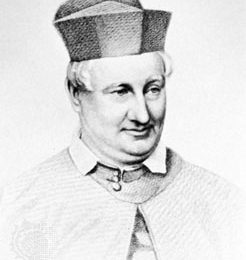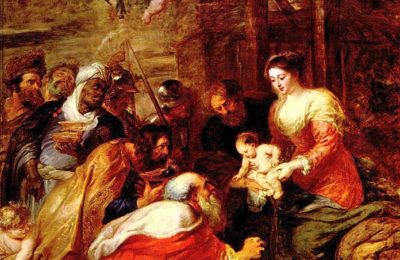I wish you all a very happy feast of St. Nicholas, aka, Santa Claus. This Catholic bishop and saint is loved throughout the world; and I would like to promote this admiration by repeating his story via the posting of writings from the Catholic writers, Professor Plinio Corrêa de Oliveira and Gilbert Keith Chesterton. First, from Professor Plinio Corrêa de Oliveira (b. 1908- d. 1995):
Biographical selection:
St. Nicholas is said to have been born at Patara in Lycia, a province of Asia Minor, in the 4th century of wealthy parents. He was named Bishop of Myra, and became famous for his holiness, charity and miracles. He was imprisoned for his faith during the persecution under Diocletian. He was present at the Council of Nicaea, at which he denounced Arianism. He died at Myra in 350. In 1087 some of his relics were transferred to Bari, Italy, and many miracles were worked through his intercession, which was the cause of his extraordinary popularity in the West.
Comments of Prof. Plinio:
Taking advantage of the wealth of his parents, St. Nicholas would give gifts to those who are called the ’embarrassed poor,’ that is, persons of a good social level who cannot beg on the streets for help but lack financial means to live. St. Nicholas used to find different ways to favor such impoverished persons, leaving gifts anonymously via a window, chimney or various other means.
A characteristic case is that of the father with three daughters who could not provide them with dowries and arrange decent marriages for them. In despair, the man was thinking that their only recourse was to lead lives of shame. On three different occasions, St. Nicholas threw bags of gold into his house, thus enabling him to provide each daughter with a dowry so she could marry well.
From this and his many other charitable works came the general idea that he would come from Heaven on Christmas Eve and give presents to well-behaved children. This was a good legend that was widely spread in Catholic countries, and quickly caught on in other countries as well. It was a stimulus for children to be Catholic, to be good and, at the same time, it nourished their innocence and sense of the marvelous. (source)
And, now, to Chesterton: this English Catholic writer expressed his lifelong love of Santa Claus which I think you will enjoy. He said:
“I do most definitely believe in Santa Claus; though I prefer to talk about him in my own language. I believe Saint Nicholas is in heaven, accessible to our prayers for anybody; if he was supposed to be specially accessible to prayers of children, as being their patron, I see no reason why he should not be concerned with giving human gifts to children. I do not suppose that he comes down the chimney; but I suppose he could if he liked. The point is that, for me, there is not that complete chasm or cutting off of all relations with the religion of childhood, which is now common in those who began by starting a new religion and have ended by having no religion.”
And:
“What has happened to me has been the very reverse of what appears to be the experience of most of my friends. Instead of dwindling to a point, Santa Claus has grown larger and larger in my life until he fills almost the whole of it. It happened in this way.
As a child I was faced with a phenomenon requiring explanation. I hung up at the end of my bed an empty stocking, which in the morning became a full stocking. I had done nothing to produce the things that filled it. I had not worked for them, or made them or helped to make them. I had not even been good – far from it.
And the explanation was that a certain being whom people called Santa Claus was benevolently disposed toward me…What we believed was that a certain benevolent agency did give us those toys for nothing. And, as I say, I believe it still. I have merely extended the idea.
Then I only wondered who put the toys in the stocking; now I wonder who put the stocking by the bed, and the bed in the room, and the room in the house, and the house on the planet, and the great planet in the void.
Once I only thanked Santa Claus for a few dolls and crackers. Now, I thank him for stars and street faces, and wine and the great sea. Once I thought it delightful and astonishing to find a present so big that it only went halfway into the stocking. Now I am delighted and astonished every morning to find a present so big that it takes two stockings to hold it, and then leaves a great deal outside; it is the large and preposterous present of myself, as to the origin of which I can offer no suggestion except that Santa Claus gave it to me in a fit of peculiarly fantastic goodwill.”
More from Chesterton:
“Children are grateful when Santa Claus puts in their stockings gifts of toys or sweets. Could I not be grateful to Santa Claus when he put in my stockings the gift of two miraculous legs? We thank people for birthday presents of cigars and slippers. Can I thank no one for the birthday present of birth?”
The Santa Claus sentiments of Chesterton are fabulous: charity and love are the hallmarks of God; and Santa Claus (St. Nick) speaks, via his actions and through his legends, to children (and grownups) of Divine Goodness.
There are Catholic customs associated with the feast of St. Nicholas; and Fish Eaters details a few in the following:
Today is, for many Catholics, the day for gift-giving (some do this on Christmas, some do this on the Feast of the Epiphany in memory of the gifts the 3 Kings gave to Baby Jesus, and some spread the gift-giving out on all these days). In some places, especially in the Eastern Catholic churches, “St. Nicholas,” dressed as a Bishop, will show up and hand out presents to the little ones, and children put their shoes in front of the fireplace to be filled with candy and presents by morning. Because coins are one of the many symbols of St. Nicholas, chocolate coins are a perfect thing to put in the childrens’ shoes. One can use Christmas stockings instead of shoes, or one can buy adult-sized wooden shoes, paint and decorate them, and bring them out for use just on St. Nicholas’s Day.
In any case, an icon — even a nice Holy Card — of St. Nicholas should be visible today if at all possible. Surround it with greenery and candles, and tell your children the story of the Saint Nicholas behind the “Santa Claus.”
On St. Nicholas’s Feast Day, it is customary to serve Speculaas cookies, a spicy Dutch cookie, cut into shapes relevant to the life of St. Nicholas (coins, mitres, ships, balls, money bags), and painted with colorful icing:
Speculaas Cookies (makes 3 dozen depending on size)
Cookie:
1 Cup (2 sticks) sweet butter, at room temperature
2 cups dark brown sugar
2 eggs
Grated rind of 1 lemon
2 teaspoons cinnamon
1 teaspoon ground nutmeg or mace
1/2 teaspoon ground cloves
1/8 teaspoon ground ginger
1/8 teaspoon cardamom
1/8 teaspoon salt
4 cups flour
1 teaspoon baking powderIcing:
Powdered sugar
Water
Lemon juice
A little beaten egg white for consistency, if desired
Food coloringIn a large bowl, cream the butter with the sugar until fluffy. Stir in the eggs one at a time, blending thoroughly after each addition. Stir in the lemon rind. Sift the spices and salt with the flour and baking powder, and stir gradually into the butter mixture. Wrap in waxed paper or plastic wrap and chill for several hours or overnight. On a floured surface, roll out the dough to about 1/8 inch, or for larger figures to about 1/4 inch. Cut into shapes (Bishop, Bishop’s staff, Bishop’s mitre, ship, coins, etc.) and bake at 350 degrees until lightly browned (don’t overbake). When cool, mix together icing ingredients and paint cookies as desired. (source)
St. Nicholas, pray for us, especially as we approached the Solemnity of the Immaculate Conception.
May you have a good day.
~SCF
~Image: St. Nicholas anonymously delivers gold coins to a family with three daughters to secure their dowries, source.






